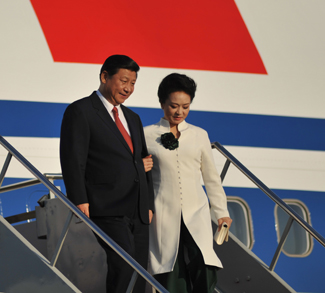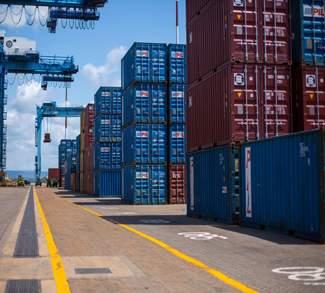Vietnam and America, once enemies, and now comprehensive partners, have developed a significant bilateral relationship since the two countries have moved away from the war’s painful past and embraced a new future with greater vision.
This week’s trade mission to Washington led by Deputy Prime Minister Vuong Dinh Hue comes at a sensitive time when the Trump Administration is embroiled in trade disputes with China, the European Union, Canada, and Mexico.
Last year Prime Minister Nguyen Xuan Phuc’s meeting in the Oval Office with President Donald helped reboot a US-Vietnam dialogue. Hue’s mission during this visit will be to lobby for Hanoi’s market economy status so that Washington will lift tariffs on their fish exports, namely catfish and shrimp among other products.
On the surface, US-Vietnam evolving economic relations moves the trade needle closer to increased normalization, but more work is needed according to sources in both Washington and Vietnam. The US- Vietnam Bilateral Trade Agreement (BTA) signed in 2001 was the signature key element in Vietnam’s short march from the battlefields into the labyrinth of legal reform, trade liberalization, and the World Trade Organization (WTO) membership.
The BTA sent a positive signal to investors and producers, especially with regards to labor-intensive manufacturers. Nevertheless, in what global investors deem a socialist market-driven economy, Washington still designates Vietnam as a ‘non-market economy.’ Under the terms of its WTO accession agreement with the U.S., Vietnam is to remain a non-market economy under U.S. law for up to 12 years after its accession or until it meets the U.S. criteria for a “market economy” designation.
Some policy experts remain optimistic about Vietnam’s progressive steps towards becoming a true market economy.
America and Vietnam widely acknowledge that globalization reflects a central facet in foreign investment in manufacturing plants like Nike in Vietnam, which employs over 400,000 young women. The tide of foreign direct investment pouring into the country has yielded many dividends, including a dramatic fall in Vietnam’s poverty rates, growing living standards, and increased life expectancy.
“Vietnam’s cautious and sequenced adoption of market institutions has brought more than two decades of impressive economic performance, all while leaving the country’s underlying political economy largely intact” claims Matthew Busch, a research fellow at Australia’s Lowy Institute.
Pushing for Market Economy Status
Vietnamese leaders are eager to see the United States change the status to a market economy since Hanoi is currently penalized with onerous antidumping and countervailing duties in excess of 25 percent in such areas as shrimp and fish exports. The scheduled trade talks are important to Vietnam as it strives to reach a GNP growth figure of 7 percent in 2018.
John Goyer, U.S. Chamber senior director for Southeast Asia, says: “we are excited about Deputy Prime Minister Hue’s visit to Washington. There is great potential for growth in our commercial relationship, but with the U.S. withdrawal from TPP, there is no overall framework in which to address our most difficult market access and other barriers in Vietnam.”
In a reception held for Michael Kelly, Chairman of the American Chamber of Commerce in Hanoi last month, Mr. Hue re-emphasized that all obstacles must be removed to promote cooperation, investment, and trade between the two countries. A number of trading partners, including ASEAN nations, Australia, India, Japan, and New Zealand have all designated Vietnam a market economy.
The American Chamber in Hanoi believes that the U.S. and Vietnam have developed a healthy trade and investment relationship that has created jobs and tax revenues for both countries.
“However, Vietnam has a large and growing trade surplus with the United States. Deputy Prime Minister Hue’s upcoming trip to Washington will focus heavily on trade and investment issues, providing a good opportunity to resolve market barriers and potentially conclude commercial agreements,” states Adam Sitkoff, executive director of the American Chamber in Hanoi.
Over the past nine months, talks between Hanoi and Washington have focused on addressing the bilateral trade deficit that has grown from $1.5 billion in 2001 to over $54 billion today. The Trump administration has continued to focus on trade issues, and this is reflected in the first quarter of the year, when U.S. accounted for 20 percent of Vietnam’s exports, an increase of 8.7 percent from the same period last year. The major export items included textile-garment, footwear, computers, seafood, farm products, electronics, and components.
On May 21, the US Commerce Department introduced import duties on Vietnamese steel products that originated in China. Imports of cold-rolled steel from Vietnam increased from $9 million to $215 million annually, while corrosion-resistant steel imports have risen from $2 million to $80 million since 2015, when the US first imposed anti-dumping duties on China.
China has used Vietnam as a third party to skirt U.S. duties on Chinese steel exports, including corrosion-resistant steel (CORE) and cold-rolled steel.
The U.S. is slapping tariffs as high as 265% on foreign-made steel. The federal agency revealed in February that it would impose antidumping and countervailing tariffs of between 39.05 percent and 199.43 percent on imports of corrosion-resistant steel made in Vietnam with substrate from China. It further imposed duties of 256 percent to 265.79 percent on cold-rolled steel from Vietnam made with Chinese substrate.
Despite a convergence of Vietnam’s foreign policy activism and a US shift towards a renewed Asia-Pacific strategy, the growing US trade deficit with Vietnam remains a contentious matter. The trade imbalance in 2017 reached an estimated $38 billion and this is now exacerbated by food safety regulations associated with the export of shrimp and catfish from Vietnam.
“If Vietnam is granted market economy status this will lower existing tariffs on Vietnamese goods exported to the United States,” adds Carlyle Thayer Emeritus Professor at the University of New South Wales, Canberra at the Australian Defense Force Academy.
Beyond the economic and trade relationship, Vietnam and the U.S. share a common concern about China’s maritime assertiveness. This military cooperation is best reflected in the dramatic image of the USS Carl Vinson ceremonious arrival in Danang’s port a few months ago. There’s agreement that the American presence in Southeast Asia offers a strategic counterweight in the contested South China Sea.
The Trump administration’s withdrawal last year from the TPP has hurt Vietnam since it would have led to an increase in US investments and helped Vietnam position itself as a destination place for low-cost manufacturing. Vietnam’s $200 billion economy, about 40 percent of which comes from manufacturing, has grown sharply, largely on foreign investment in exports of various goods ranging from shoes to smartphones.
“The U.S. withdrawal from TPP unmoored the US-Vietnam trade relationship. Both sides would like to find a new, positive, direction to take things, but so far the administration has not rolled out a coherent economic approach to either Vietnam or ASEAN, and Vietnam has been caught up in the ancillary effects of a lot of the policies that focus on China and trade deficits,” says Anthony Nelson, Director of Albright Stonebridge Group.
Vietnam is acclaimed as one of Southeast Asia’s stellar economic performers. Hanoi’s shift toward a market economy since 1986 brought about an era of prosperity for more citizens and fueled the rise of a middle class that now owns SUVs, condos, HTDVs, and smartphones. This ‘New Vietnam’ is shaped largely by the youth, since 50 percent of the country’s estimated 94 million people are under 30.
The Internet is another key component of Vietnam’s market-driven economy. With expanded bandwidth for access to alternative sources of information, citizens now regularly broadcast their views via social media, especially on Facebook. This global connectivity has leveraged even greater integration with the international economic system, increased citizens’ participation in international trade, and enabled Vietnam to take on more ASEAN leadership responsibilities.
The opinions, beliefs, and viewpoints expressed by the authors are theirs alone and don’t reflect any official position of Geopoliticalmonitor.com.




